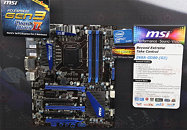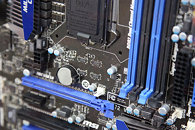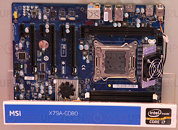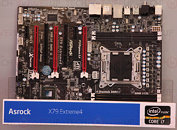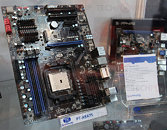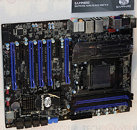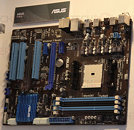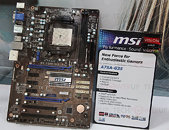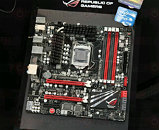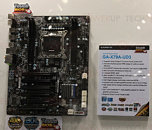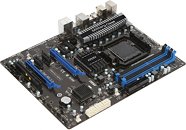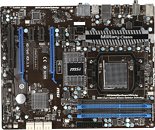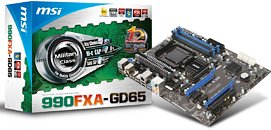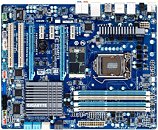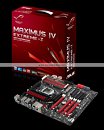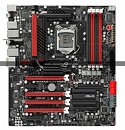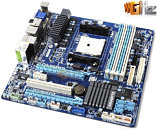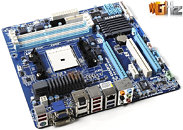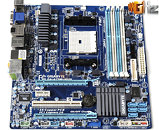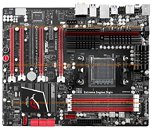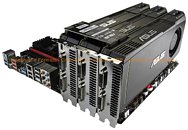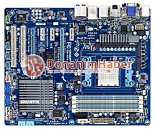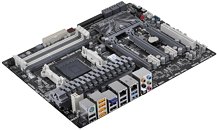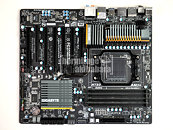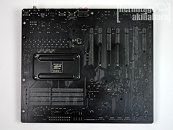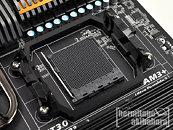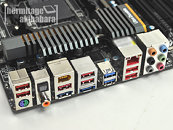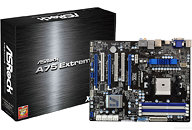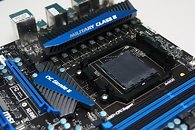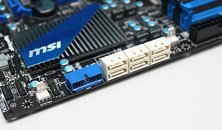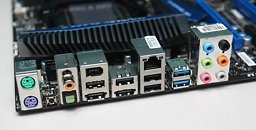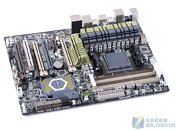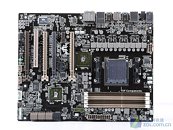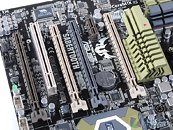
MSI New Z68A-GD80 Swims in PCI-Express 3.0 Fame
While Sandy Bridge-E LGA2011 processors will come with integrated PCI-Express 3.0 hubs, they're still a couple of quarter financial years away. Meanwhile, MSI jumped the gun on its latest socket LGA1155 Intel Z68-based motherboard with not only support for Intel's upcoming 22 nm Ivy Bridge LGA1155 processors, but also the PCI-Express 3.0 hubs that the new processors come with. While Ivy Bridge has PCI-E 3.0 hub, not just any LGA1155 motherboard can give you PCI-E 3.0 support. It requires slots that are compliant with the new specification, and needs PCI-E 3.0 compliant external switching chips. MSI has both, on its new Z68A-GD80 motherboard, and with it, the bragging rights of being the world's first PCI-E 3.0 compliant motherboard.
PCI-Express 3.0 gives you twice the interface bandwidth as PCI-Express 2.0, which means that PCI-Express 3.0 x8 has the same bandwidth as PCI-Express 2.0 x16. But before you celebrate, let's remind ourselves that you also need a PCI-E 3.0 compliant GPU to make the slots operate at Gen 3.0 speeds. Installing PCI-Express 2.0 GPUs on Gen 3.0 won't run the slots at Gen 3.0 speeds. That aside, the Z68A-GD80 is a sufficiently-equipped enthusiast motherboard featuring 14-phase VRM for the CPU, dual-channel DDR3-2133 support, two PCI-E 3.0 x16 slots (x8/x8 with populated), a third PCI-E x16 wired to the Z68 PCH, running at PCI-E 2.0 x4 speeds, and a couple of PCI-E 2.0 x1 and legacy PCI. There are three internal SATA 6 Gb/s ports; eSATA, USB 3.0, make for the rest of the connectivity. There is full-fledged display connectivity, with Lucid Virtu support. Expect this board to be out any time soon.
PCI-Express 3.0 gives you twice the interface bandwidth as PCI-Express 2.0, which means that PCI-Express 3.0 x8 has the same bandwidth as PCI-Express 2.0 x16. But before you celebrate, let's remind ourselves that you also need a PCI-E 3.0 compliant GPU to make the slots operate at Gen 3.0 speeds. Installing PCI-Express 2.0 GPUs on Gen 3.0 won't run the slots at Gen 3.0 speeds. That aside, the Z68A-GD80 is a sufficiently-equipped enthusiast motherboard featuring 14-phase VRM for the CPU, dual-channel DDR3-2133 support, two PCI-E 3.0 x16 slots (x8/x8 with populated), a third PCI-E x16 wired to the Z68 PCH, running at PCI-E 2.0 x4 speeds, and a couple of PCI-E 2.0 x1 and legacy PCI. There are three internal SATA 6 Gb/s ports; eSATA, USB 3.0, make for the rest of the connectivity. There is full-fledged display connectivity, with Lucid Virtu support. Expect this board to be out any time soon.
